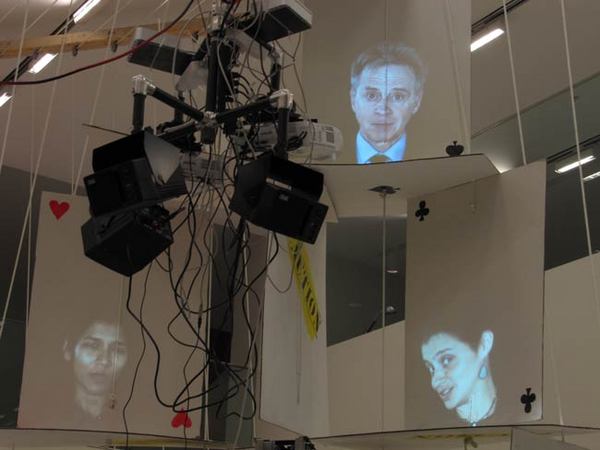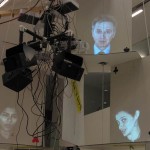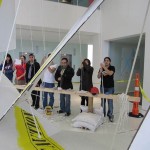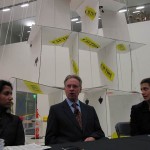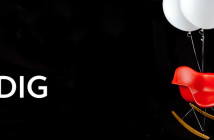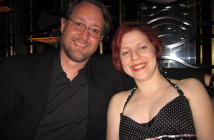By JESSE KAMINSKY
Parsing the causes and consequences of the current financial crisis can be truly daunting, especially if you, like me, are untrained in the current financial cover-up lingo. To the casual observer, there seem to be as many theories about why we're in this mess and how we can get out as there are experts, with the only unifying factor among them being unhappiness with our current trajectory. Though it's unclear what the full impact of this collapse will be, it was only beginning to manifest as John Malpede began his fellowship at MIT's Center for Advanced Visual Studies (CAVS).
The response to the crisis within MIT was analogous to the broader national dialog in that it was a diverse and contradictory range of opinions and ideas. This disparity in opinion was particularly evident in two discussions that emerged from MIT around this time; "The Quiet Coup," written by Simon Johnson and published in the Atlantic Monthly in May of 2009 and a panel discussion entitled "How to get a job," delivered by three veteran financial managers to a group of anxious graduating students. Intended to ease the anxious minds of graduating financial engineers, the panel discussion instead served to expose the arrogance and selfishness of the three presenters and by proxy, the entire financial sector. On the other hand, the "Quiet Coup" is a caustic attack on the entrenched American financial oligarchy by Johnson, a former chief economist at the IMF and current professor at the Sloan School, in which he describes a bleak international forecast unless we breakup the oversized, self-unregulating network of risk-takers that make up the financial sector. Taken as counterparts, these texts present a shockingly dysfunctional portrait of the American socio-financial landscape and it is this contrast that drives Bright Futures.
Bright Futures premiered at the Tisch School for the Arts at NYU as a part of Performa 09 but this most recent iteration, presented at the brand new Fumihiko Maki-designed home of the MIT Media Lab, was an expanded, multimedia presentation incorporating remixed video of previous versions and a large-scale sculpture and performance by students from an MIT class, "Things Fall Apart," taught by Wendy Jacob. It was divided into three interrelated acts, beginning with a video installation in three parts by Mary Ellen Strom and students from the School of the Museum of Fine Arts that played as the audience gathered. The videos showed a series of headshots of the performers and seemed to serve as a trailer for the main feature. The sculpture, an oversized house of cards suspended in the crisp new first floor atrium by an elaborate construction of wooden beams, pulleys and ropes, served both as backdrop for the performers, projection screen for the videos and kinetic interaction with the performers as it crumpled and revived itself during the discussion. The main event - and strongest component by far - was the panel discussion and audience questions.
Bright Futures was promised in the accompanying pamphlet to be a "100% non-threatening participatory event," an oxymoron if ever there was one, but nonetheless, I was relieved to see that all the pages of script had been handed out long before I arrived. The setting was similar to any college panel discussion, save for being in the lobby with gigantic playing cards, and it was this matter-of-factness that served as the dramatic matrix for the discussion. Three performers dressed in business casual – Malpede in the center, flanked by Nell Breyer and Tanya Selvaratnam – delivered word for word the "How to get a job" presentation, taking only occasional improvisational liberties by repeating certain phrases for emphasis. Even knowing that it was spoken verbatim from a real financial discussion, it was hard to believe. The three candidly rationalized layoffs for the less productive and multi million-dollar bonuses for themselves, while justifying nepotism, deregulation and a return to business as usual once the credit markets unfreeze. Periodically, as in any casual panel conversation, they were interrupted by members of the audience with 'questions' that were actually randomly chosen paragraphs from "The Quiet Coup," the script that had been handed out. The randomness with which the paragraphs were chosen often meant that they had no direct relationship with the discussion and minimized their impact for those not familiar with the article in advance but it did lend to interesting moments of dramatic indeterminacy. The success of this arrangement drew from its casualness; its ability to deliver this devastating critique and still almost pass as a conventional panel discussion. The setting and dress fit the parts and the audience questions were flatly dismissed in a manner that summoned the PR phrase "answer the question you wish you had been asked." Similarly, the audience's paragraphs sounded very similar to the 'let me show you what I know' type of rambling question that often pops up at panel discussion Q&A's. But the matrix was broken toward the end of the presentation when, as the presenters are discussing a particularly expensive night on the town, students from the audience rose and took position as puppeteers of the giant house of cards. Wearing hard hats and gloves (they are future financial engineers after all), they gently collapsed and re-erected the giant house of cards. The effect was somewhat surreal, especially since most of the action to this point was so dialog based that I had almost forgotten the cards by this point, even if the metaphor was a bit overbearing and expected.
Following the conclusion of this panel discussion was a surprise third act as the student puppeteers began to roam around the room reading bits and pieces of scripts on their own. The content ranged from seemingly personal diary stuff to excerpts from the Yeats poem "The Second Coming." They broke into groups with varying degrees of enthusiasm to perform in a number of cut-up and fold-in type arrangements. Coming so seemingly spontaneously on the heels of more formal panel discussion, their performance felt like a confusingly whimsical counterpoint to the grave and dangerous world they are about to enter.
- “Bright Futures”
- “Bright Futures”
- “Bright Futures”
MIT Center for Advanced Visual Studies
"Bright Futures" was performed on December 10, 2009 at CAVS.
All images are courtesy of the artist and CAVS.

